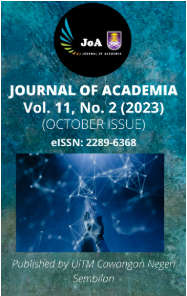THE ROLE OF COMMUNICATION TECHNOLOGY TOOLS IN ENHANCING JOB PERFORMANCE AMONG PROFESSIONALS IN THE TELCO INDUSTRY
Keywords:
Communication Technology, Telecommunications Industry, Job Performance, ProfessionalAbstract
Communication technology is crucial for projecting a positive image, being competitive, and maintaining a company's market reputation. The TAM (Technology Acceptance Model) is a theoretical paradigm that explains how humans embrace and use technology. According to the concept, individual perceptions of a technology's ease of use and utility are primary drivers of its acceptance. To carry out their jobs, professionals in the telecommunications business may use a variety of communication technologies, such as email, instant messaging, video conferencing, and collaboration tools. Acceptance of these communications’ technology may have a significant impact on job performance since they promote internal communication and cooperation, boost productivity, and allow for remote work. The goal of this study is to investigate the relationship between acceptance of communication technology and job performance among telecommunications professionals. As a result, this study incorporates two key components of technology acceptance model (TAM): perceived usefulness (PU) and perceived ease-of-use (PE) (PEU). This study employed the quantitative method, which comprised an online-based questionnaire given to telecommunications professionals. According to the research, the use of communication technology has a substantial effect on job performance. As a consequence, the findings of this study may be applied to increase employee performance on a daily basis.
References
Ahmad, R. (2019). The impact of communication technology on job performance among professionals in the telco industry in Malaysia. International Journal of Innovation, Creativity and Change, 4(2), 1-14.
Ahmad, R. (2019). The telecommunication industry in Malaysia: An overview. Journal of Business and Technology, 32(1), 12-25.
Ahmad, R. (2020). The merger of Celcom and Digi: Implications for the telecommunication industry in Malaysia. Journal of Business and Technology, 35(1), 12-18.
Davis, F. D. (1989). Perceived usefulness, perceived ease of use, and user acceptance of information technology. MIS Quarterly, 13(3), 319-340.
Dillman, D. A., Smyth, J. D., & Christian, L. M. (2014). Internet, phone, mail, and mixed-mode surveys: the tailored design method. John Wiley & Sons.
Frost & Sullivan. (2018). The Impact of Cloud Computing and Big Data Analytics on the Telco Industry. Retrieved from https://ww2.frost.com [Access online 7 January 2023].
Huawei. (2018). 5G: The next step in mobile connectivity. Retrieved from https://www.huawei.com/en/5g [Access online 7 January 2023].
Johari, R. (2020). The impact of digitalization on the telecommunication industry in Malaysia. Journal of Digital Transformation, 5(1), 78-89.
Johari, R. (2022). The benefits of the Celcom-Digi merger for the telecommunication industry in Malaysia. Journal of Digital Transformation, 8(1), 78-84.
Khan, M. (2018). The role of communication technology in enhancing productivity among professionals in the telco industry in Malaysia. Journal of Business and Technical Communication, 32(4), 523-544.
Krejcie, R. V., & Morgan, D. W. (1970). Determining sample size for research activities. Educational and psychological measurement, 30(3), 607-610.
Mustapha, N., Razak, A., & Ahmad, R. (2020). The impact of communication technology on work-life balance among professionals in the telco industry in Malaysia. Journal of Work-Life Integration, 3(2), 1-12.
Turkle, S. (2018). Reclaiming conversation: The power of talk in a digital age. Penguin.
Venkatesh, V. (2018). Technology acceptance model. Springer, Cham.
Venkatesh, V. (2018). The Technology Acceptance Model: Past, present and future. In: Handbook of Information Technology in Organizations and Electronic Markets. Springer, Singapore.
Venkatesh, V., & Davis, F. D. (2000). A theoretical extension of the technology acceptance model: Four longitudinal field studies. Management Science, 46(2), 186-204.
Zakaria, N. (2018). The competitive landscape of the telecommunication industry in Malaysia. Journal of Industry and Competition, 15(2), 45-57.
Zakaria, N. (2021). The impact of the Celcom-Digi merger on the competitive landscape of the telecommunication industry in Malaysia. Journal of Industry and Competition, 18(2), 45-52.
Downloads
Published
Issue
Section
License
Copyright (c) 2023 Journal of Academia

This work is licensed under a Creative Commons Attribution-NonCommercial-NoDerivatives 4.0 International License.












